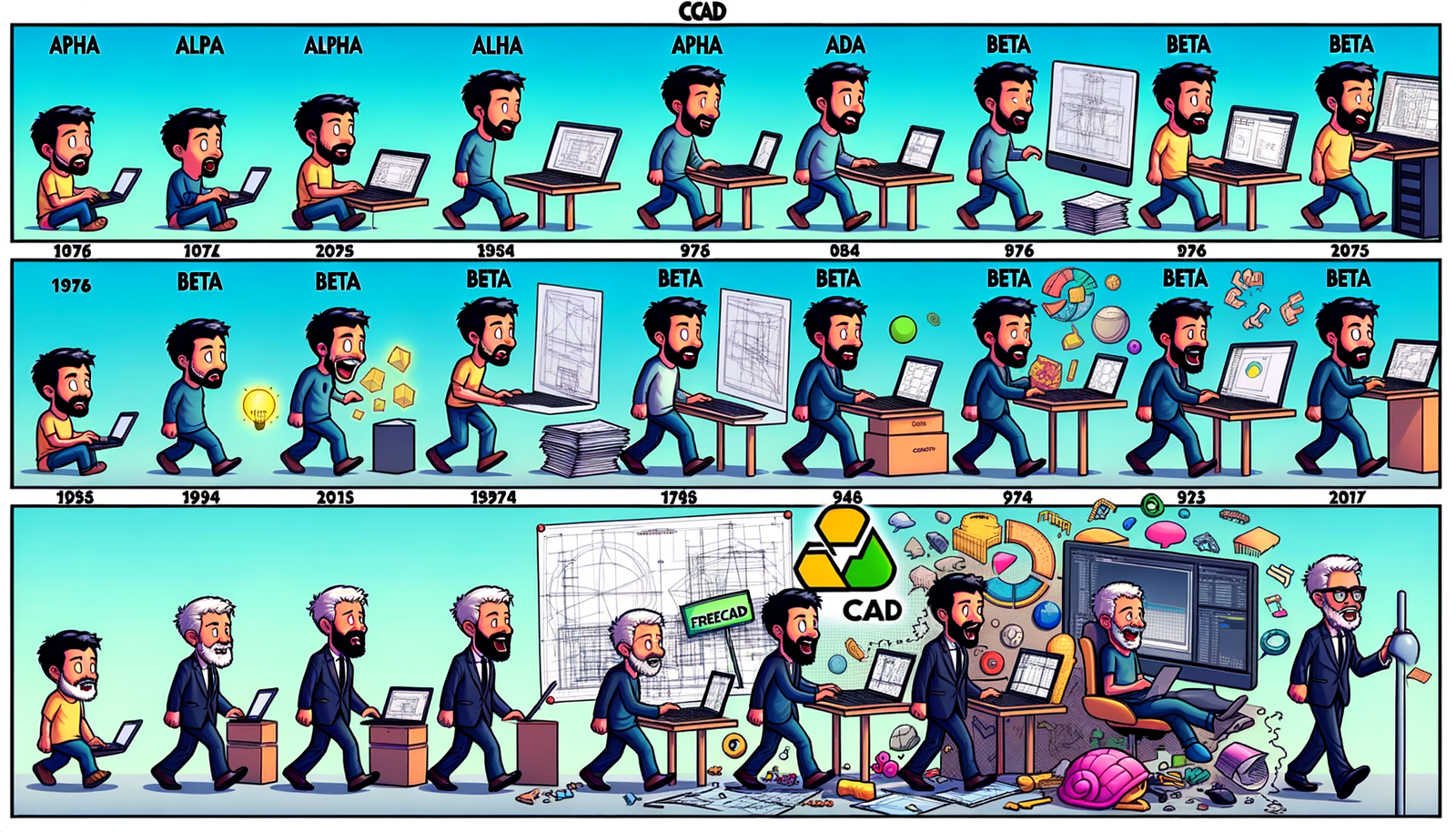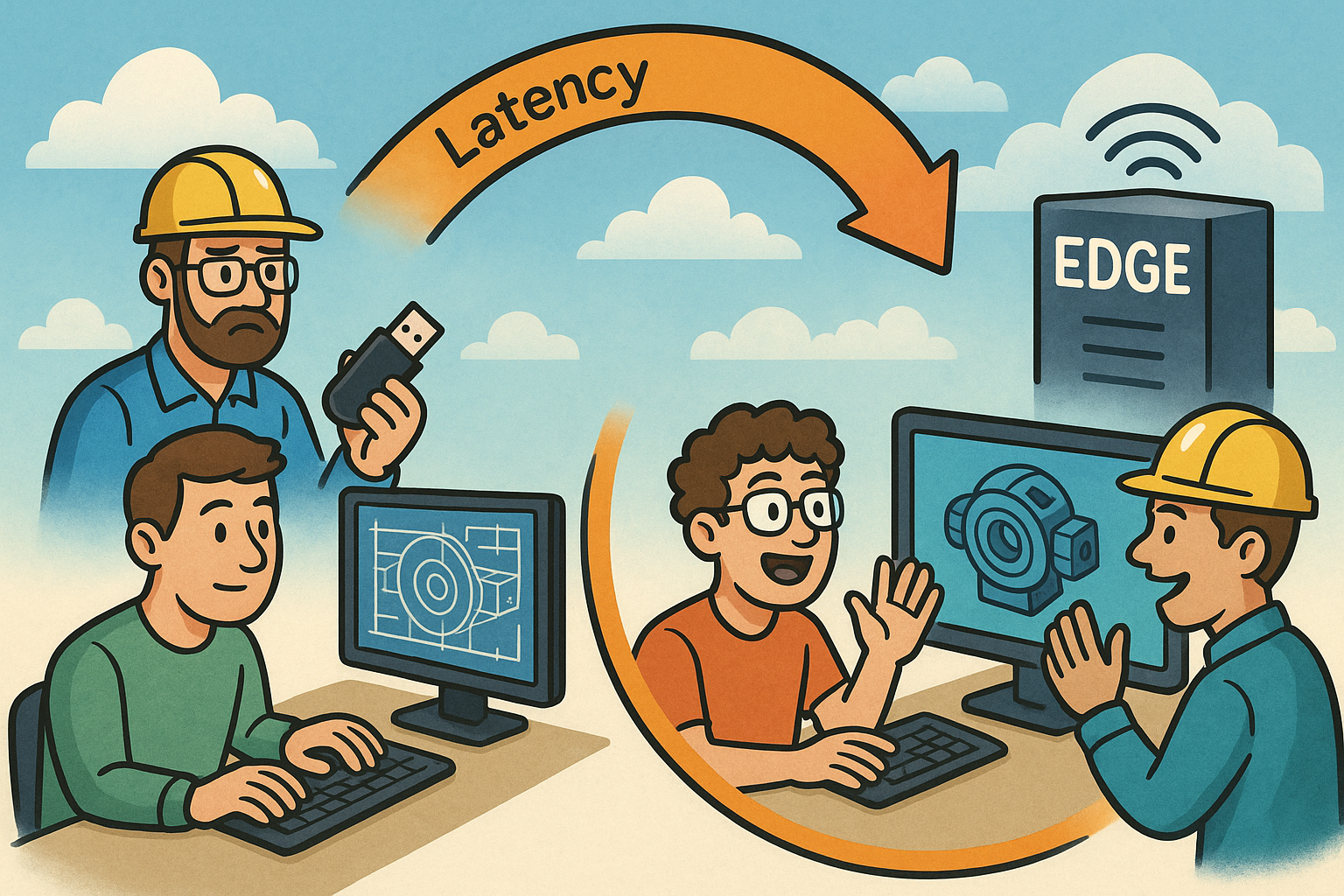Your Cart is Empty
Customer Testimonials
-
"Great customer service. The folks at Novedge were super helpful in navigating a somewhat complicated order including software upgrades and serial numbers in various stages of inactivity. They were friendly and helpful throughout the process.."
Ruben Ruckmark
"Quick & very helpful. We have been using Novedge for years and are very happy with their quick service when we need to make a purchase and excellent support resolving any issues."
Will Woodson
"Scott is the best. He reminds me about subscriptions dates, guides me in the correct direction for updates. He always responds promptly to me. He is literally the reason I continue to work with Novedge and will do so in the future."
Edward Mchugh
"Calvin Lok is “the man”. After my purchase of Sketchup 2021, he called me and provided step-by-step instructions to ease me through difficulties I was having with the setup of my new software."
Mike Borzage
Design Software History: History of FreeCAD: The Evolution of Open Source CAD Software
August 08, 2024 3 min read


Introduction to Open Source CAD
Open source software has revolutionized the technology landscape by making high-quality, collaborative development accessible to all. The core principles of open source software include transparency, community-driven development, and free distribution. These principles hold significant importance in democratizing access to software tools that were traditionally restricted by cost and proprietary constraints.
Before the advent of open source solutions, the Computer-Aided Design (CAD) industry was dominated by proprietary software. This period was characterized by the high costs of licensing, restrictive usage policies, and limited customization options. The proprietary nature of these tools presented substantial barriers to entry, especially for small businesses, hobbyists, and educational institutions.
The Birth and Evolution of FreeCAD
Early Development
FreeCAD was founded by Jürgen Riegel, Werner Mayer, and Yorik van Havre with a vision to create a free and open-source parametric 3D CAD modeler. The initial goals of FreeCAD were to provide a robust, modular, and extensible CAD system that could serve a wide range of uses from industrial design to mechanical engineering.
Key Milestones
The development of FreeCAD has seen numerous significant releases and enhancements over time. Some of the key milestones include:
- Version 0.7 - The first public release that laid the foundation for FreeCAD's core architecture.
- Version 0.13 - Introduction of the Part Design workbench, significantly improving parametric modeling capabilities.
- Version 0.17 - Major overhaul of the Part Design and Sketcher workbenches, enhancing the user experience and workflow efficiency.
Community contributions have played a crucial role in shaping FreeCAD. The active participation of users in forums, the submission of bug reports, and the proposal of new features have all contributed to the continuous improvement of the software.
Technological Innovations
FreeCAD introduced several technological innovations that set it apart from other CAD tools. The implementation of parametric modeling allows users to create designs that can be easily modified by changing parameters, making it highly flexible for iterative design processes. Another significant feature is the integration of Python scripting, which enables automation and customization through user-defined scripts.
The modular architecture of FreeCAD is another standout feature. This design allows for the addition of new functionalities via modules, which can be developed independently and integrated seamlessly into the main application. This approach not only fosters a diverse ecosystem of tools but also encourages innovation and experimentation.
Impact on the Industry and Community
Adoption and Use Cases
FreeCAD has seen widespread adoption across various industries and among individual users. Its capabilities and flexibility often draw comparisons with proprietary software. While proprietary CAD systems may offer advanced features and integrations, FreeCAD provides a highly competitive alternative that is accessible to a broader audience.
Community and Ecosystem
The role of the FreeCAD community in its development and support cannot be overstated. The collective efforts of developers, contributors, and users have resulted in a rich and dynamic ecosystem. Important contributors and organizations such as the Open Source Ecology project have provided significant support for FreeCAD's growth and development.
The community-driven approach has also led to the creation of numerous resources, including extensive documentation, tutorials, and forums where users can seek help and share knowledge.
Educational Influence
FreeCAD has made significant inroads into educational institutions, being adopted as a tool for teaching CAD principles. Its open-source nature and the availability of comprehensive resources make it an ideal choice for educators and students alike.
- Universities and technical schools use FreeCAD to provide hands-on experience with parametric modeling.
- Community-developed tutorials and courses have helped lower the learning curve for new users.
Challenges and Future Directions
Current Challenges
Despite its successes, FreeCAD still faces several technical hurdles and limitations. Performance issues, especially with large assemblies, and the complexity of the user interface are common areas of concern. Additionally, competition with established proprietary CAD systems remains a significant challenge.
Opportunities for Growth
There are numerous potential areas for technological improvement and new features in FreeCAD. Expanding the support for advanced simulation and analysis tools, improving the performance and usability of large models, and enhancing the overall user experience are some of the key opportunities.
Increasing community involvement and expanding the user base are also critical for the sustained growth of FreeCAD. More active participation from users can lead to faster identification of issues, more innovative solutions, and a stronger overall ecosystem.
Future Vision
Insights from key developers and contributors suggest a promising future for FreeCAD. The long-term goals for the project include making FreeCAD a leading CAD solution in both open-source and proprietary markets. The commitment to the principles of open source—transparency, community collaboration, and free access—continues to guide the project's development and vision for the future.
Also in Design News

Live Performance Budgets: Real-Time Cost, Carbon, Energy and Lead-Time in CAD/BIM
December 11, 2025 14 min read
Read More
Design Software History: From File-Shuttling to Edge: The Latency Evolution of Collaborative CAD and Real-Time Visualization
December 11, 2025 13 min read
Read More
Cinema 4D Tip: Cinema 4D Soft Body Quick Setup & Parameter Tuning
December 11, 2025 2 min read
Read MoreSubscribe
Sign up to get the latest on sales, new releases and more …


